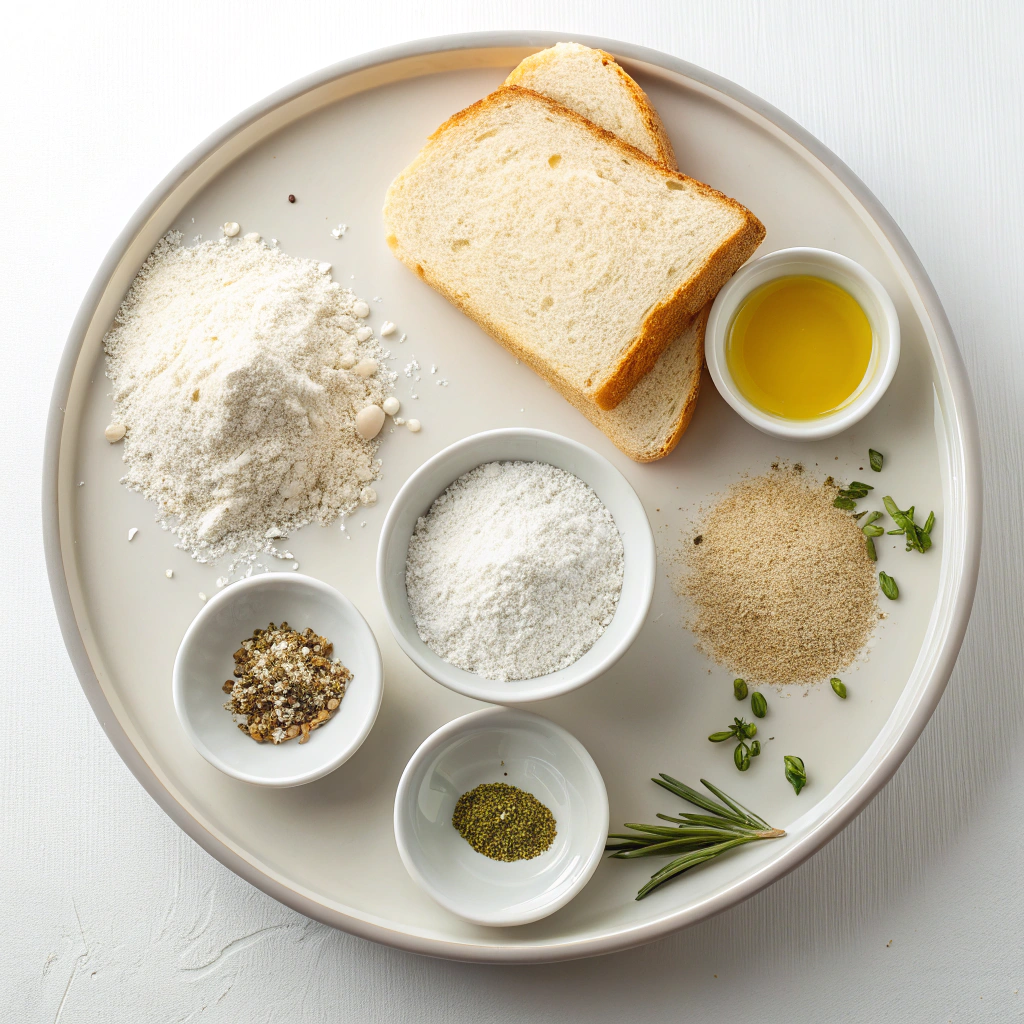There’s something magical about biting into a loaf of Bakery-Style No-Knead Ciabatta Bread—its golden, crackly crust giving way to a soft, airy interior.
This recipe delivers the rustic charm of an artisan bakery with minimal effort, thanks to an overnight proof that develops deep, complex flavors. The result is a loaf with a perfect balance of chewy texture and subtle tang, ideal for sandwiches, dipping, or simply savoring on its own.
With just 30 minutes of prep and a 35-minute bake, this ciabatta is surprisingly simple yet impressively professional. The long, 18-hour proof works its magic while you sleep, filling your kitchen with the irresistible aroma of freshly baked bread.
Whether you’re a seasoned baker or a beginner, this recipe promises a rewarding experience and a loaf that’s as beautiful as it is delicious.
Ingredients for Bakery-Style No-Knead Ciabatta Bread

- 3 ½ cups (17 ½ oz/496g) white bread flour (or substitute with all-purpose flour if needed)
- ½ cup (2 ½ oz/71g) whole wheat flour (adds a nutty flavor and texture)
- 1 ½ teaspoons salt (fine sea salt works best)
- ¼ teaspoon instant yeast (also known as rapid-rise yeast)
- 2 cups (16 fl oz/450ml) lukewarm water (about 100°F/38°C)
- 1 tablespoon olive oil (extra virgin for best flavor)
Step-by-Step Instructions
- The Day Before: In a large bowl, mix together the white bread flour, whole wheat flour, salt, and instant yeast. In a separate jug, combine the lukewarm water and olive oil. Pour the wet ingredients into the dry ingredients and mix until a wet dough forms. Scrape down the sides of the bowl, cover with a shower cap or cling wrap, and then a kitchen towel. Let it ferment at room temperature for about 18 hours to develop flavor and texture.
- The Next Day: Prepare two large baking sheets: Line one with a clean kitchen towel and dust liberally with flour. Line the other with parchment paper. Set aside.
- Uncover the dough and gently knock it back. Roll it into a ball, then divide it into two equal pieces. Place the pieces side by side on the floured towel. Cover with the kitchen towel and let them proof for 2 hours.
- Preheat your oven to 425°F (210°C).
- Once bubbles have formed and the dough has risen, carefully turn over each loaf and stretch it out to about 16 inches as you transfer it to the parchment-lined baking sheet.
- Bake for 35-40 minutes, or until the loaves are golden brown and sound hollow when tapped on the bottom.
- Allow the bread to cool completely on a wire rack before slicing. Enjoy fresh with butter, or toast any leftovers for homemade garlic bread.
Perfect Pairings: Serving Suggestions for Ciabatta
This bakery-style ciabatta is a versatile bread that pairs beautifully with a variety of dishes. Serve it fresh with a drizzle of olive oil and a sprinkle of sea salt for a simple yet delicious snack.
It’s also perfect for dipping into soups like tomato basil or minestrone. For a hearty meal, use it to make sandwiches with roasted vegetables, prosciutto, or mozzarella.
Keep It Fresh: Storage and Reheating Tips
To maintain the ciabatta’s crusty exterior and soft interior, store it in a paper bag at room temperature for up to 2 days. For longer storage, wrap it tightly in plastic wrap and freeze for up to 3 months.
To reheat, place the bread in a 350°F (175°C) oven for 5-10 minutes until warm and crispy. Leftover slices make excellent garlic bread—just toast and spread with a mix of butter, garlic, and parsley!
Mix It Up: Recipe Variations to Try
Experiment with different flavors by adding rosemary, thyme, or sun-dried tomatoes to the dough before the first rise. For a cheesy twist, fold in 1 cup of shredded Parmesan or cheddar. If you prefer a lighter texture, replace the whole wheat flour with additional white bread flour. These small tweaks can transform your ciabatta into a unique creation!
Baking Made Easy: Equipment Guidance
While this recipe requires minimal equipment, a few tools can make the process smoother. Use a stand mixer with a dough hook to combine the ingredients effortlessly.
A bench scraper is handy for dividing and shaping the dough. For baking, a pizza stone or cast iron skillet can help achieve a crispier crust. Don’t forget a kitchen scale for precise measurements!
Your Questions Answered: Common FAQs
Can I use active dry yeast instead of instant yeast? Yes, but you’ll need to activate it first by dissolving it in the lukewarm water for 5-10 minutes. Why is the dough so wet? The high hydration creates the ciabatta’s signature airy texture.
Don’t worry—it’s supposed to be sticky! Can I shorten the proofing time? While possible, the long fermentation is key to developing flavor and texture, so it’s worth the wait.
Bakery-Style No-Knead Ciabatta Bread
Ingredients
- 3 ½ cups white bread flour
- ½ cup whole wheat flour
- 1 ½ teaspoon salt
- ¼ teaspoon instant yeast
- 2 cups lukewarm water
- 1 tablespoon olive oil
Instructions
- The Day Before: In a large bowl mix together the flours, salt, and yeast. In a separate jug mix together the water and oil. Add the wet into the dry ingredients and mix to form a wet dough. Scrape down the bowl and cover with a shower cap or cling wrap and a kitchen towel. Leave to ferment at room temperature for about 18 hours. Over this time flavor and texture will develop.
- The Next Day: Prepare 2 large baking sheets: Line one baking sheet with a clean kitchen towel and dust liberally with flour. Line the other with parchment paper. Set aside.
- Uncover and knock back the dough and roll into a ball. Divide the dough into two pieces and place side by side on the floured towel. Cover with the kitchen towel and allow to proof for 2 hours.
- Preheat the oven to 425°F (210°C).
- Once bubbles have formed and the dough has risen turn over each loaf and stretch it out to 16 inches as you turn it then carefully place it on your parchment-lined baking sheet. (see video above for step by step).
- Bake for 35-40 minutes until golden brown. Allow the bread to cool completely before cutting. Enjoy fresh with butter. Any leftovers toast up great for homemade garlic bread.
